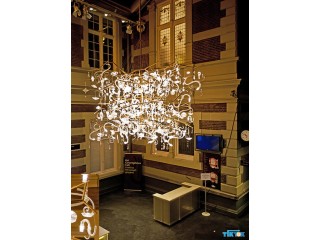Marble vs Granite: Difference Between these two Materials Private
2 years ago - Multimedia - San Antonio - 53 views -Marble vs granite: in this article we will try to clarify the difference between marble and granite, two wonderful rocks. Both are natural sandstones extensively used in interior and exterior design, for modern and rustic furniture. They are characterized by high resistance, timeless beauty and versatility: but what is the difference between marble and granite? In order to analyze the granite marble difference, we must focus on three main aspects: geological, chemical and aesthetic difference.
First of all, granite is a volcanic rock formed from molten magma that has cooled slowly over a period of time inside the earth’s crust. This is the reason why granite is mainly made up of silicates, has a grain structure and is harder and more compact. On the contrary, marble is a metamorphic rock mainly made of calcium carbonate which is the result of the sedimentation on the seabed of various materials such as mud, shells, minerals and algae which, over time, following a process of transformation, have become a unique hardened material with a granular and crystalline structure. To simplify the difference between marble and granite, we can say that while marble forms in the sea, granite forms inside the earth’s crust.
Since granite is rich of silicates, it is tougher and more resistant especially to resistant to acid substances, scratches, wear and atmospheric agents. This is the main reason why granite is preferred in outdoors applications or in places where heavy foot traffic is expected. Yet, the processing of granite is not easy at all as it is cut and broken with difficulty and, in fact, its cost is on average higher than that of marble.
The main difference between marble and granite probably lies in the aesthetic properties. On the one hand, granite is characterized by a particularly recognizable “speckled” effect and its color is determined by the variation in the percentage of minerals (such as quartz, mica, feldspar, amphibole, etc.) contained in the stone. Marble is unanimously considered more fascinating due to its irregular veins and varieties of colors based on its impurities.
Difference between marble and granite: how to choose these materials in design
The chemical-physical characteristics that depict the marble and granite difference also explain the use of these two materials in design. Granite, not being very absorbent and resistant to weak acids, it is largely used for the realization of countertops. Furthermore, granite is a very hard and cut resistant stone: all qualities that make it excellent for use in the kitchen. For the same reasons, granite is perfectly suitable for the production of walkable surfaces such as floors. Nevertheless, for this application granite sometimes does not adequately respond to the aesthetic criteria in vogue today; marble, instead, continues to be the preferred material in the marble vs granite flooring competition.
Another difference between marble and granite in design concerns the production of pieces of furniture. Due to the difficult workability and the change in aesthetic standards, granite has been used less for furniture design compare to the 70s and the 80s when it was more popular. Today, however, it seems that a trend inversion is taking place. This is true also thanks to new types of finish available: with a matte finish, matt imported granite can beautifully adapt to more contemporary furnishing compared to the typical glossy finish granite. In conclusion, to the question granite vs marble dining table, the Customer’s response may not be so obvious nowadays.



















